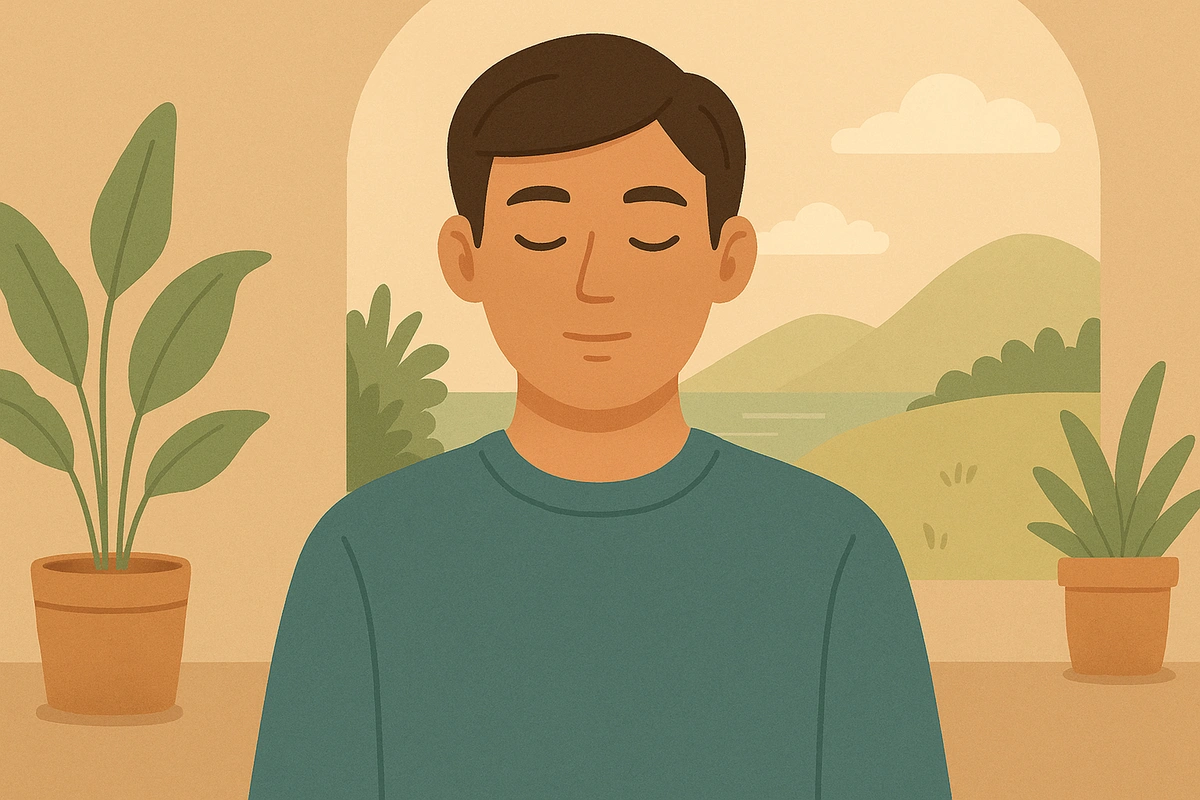Creating a safe space visualization involves mentally designing and visiting a detailed, peaceful, and comforting place that feels completely secure. This guided mental exercise helps ground and stabilize emotions during intense anxiety, panic attacks, or stress with 3-6 minutes of focused imagery.

When anxiety or panic hits, your mind can feel like it's spinning out of control with racing thoughts and overwhelming fear. You might feel trapped in your own head, unable to find relief from the intense emotions flooding your system. Traditional coping methods might feel too complicated or take too long when you need immediate relief.
Safe space visualization offers a quick escape route that you can access anywhere, anytime. This mental imagery technique harnesses your mind's natural ability to create calm through detailed mental pictures, helping you find peace even in the middle of emotional storms.
Safe space visualization operates through several connected brain and body mechanisms that naturally promote calm and reduce distress. The core principle involves what neuroscience researchers call "embodied cognition," which is the way mental imagery can create real physical and emotional responses in the body.
The technique leverages what psychologists term "guided imagery," which uses the mind's ability to create detailed mental pictures that trigger the same brain responses as actual experiences. When you visualize a safe, peaceful place, your brain responds as if you're actually there.
One fundamental mechanism involves what researchers call "parasympathetic activation," which is the body's natural relaxation response. Studies demonstrate that detailed mental imagery of calm environments activates the parasympathetic nervous system, leading to slower heart rate, deeper breathing, and reduced stress hormone production.
The practice works through what cognitive scientists call "attention regulation," which involves directing your focus away from anxiety-provoking thoughts toward peaceful, safe imagery. This shift in attention interrupts the cycle of anxious thinking that maintains emotional distress.
Safe space visualization builds what researchers term "emotional regulation capacity," which is your ability to influence your own emotional states. Clinical research shows that regular visualization practice strengthens neural pathways associated with calm and self-soothing.
The framework addresses what trauma specialists call "grounding," which helps people feel connected to the present moment and their physical body rather than lost in anxious thoughts or trauma memories.
From a brain science perspective, visualization may strengthen connections between the prefrontal cortex (thinking brain) and limbic system (emotional brain), improving your ability to use thinking strategies to calm intense emotions.
Additionally, safe space imagery prevents what psychologists call "catastrophic thinking" by providing a mental alternative to worst-case scenario thoughts that often fuel anxiety and panic.
"I can't create clear mental images" - This is common and doesn't mean visualization won't work for you. Focus on whatever sensory information comes naturally - sounds, feelings, or general impressions work just as well as detailed visual pictures.
"My mind keeps wandering to anxious thoughts" - This is normal, especially when starting out. Gently redirect your attention back to your safe space without judging yourself. Consider using guided audio to help maintain focus.
"I can't think of a place that feels safe" - Start with completely imaginary places or combine elements from different real locations. Your safe space doesn't have to be a real place - it can be a fantasy location that represents safety to you.
"The visualization doesn't seem to help my anxiety" - Try combining it with deep breathing, extending the practice time, or adding more personal meaningful details. Some people need more practice before noticing significant effects.
"I feel silly or skeptical about visualization" - It's normal to feel uncertain about new techniques. Approach it as an experiment rather than requiring yourself to believe it will work, and notice any small changes in how you feel.
"I get distracted by physical discomfort during visualization" - Adjust your position, address basic needs like temperature or hunger before starting, and remember that mild discomfort doesn't prevent the technique from working effectively.